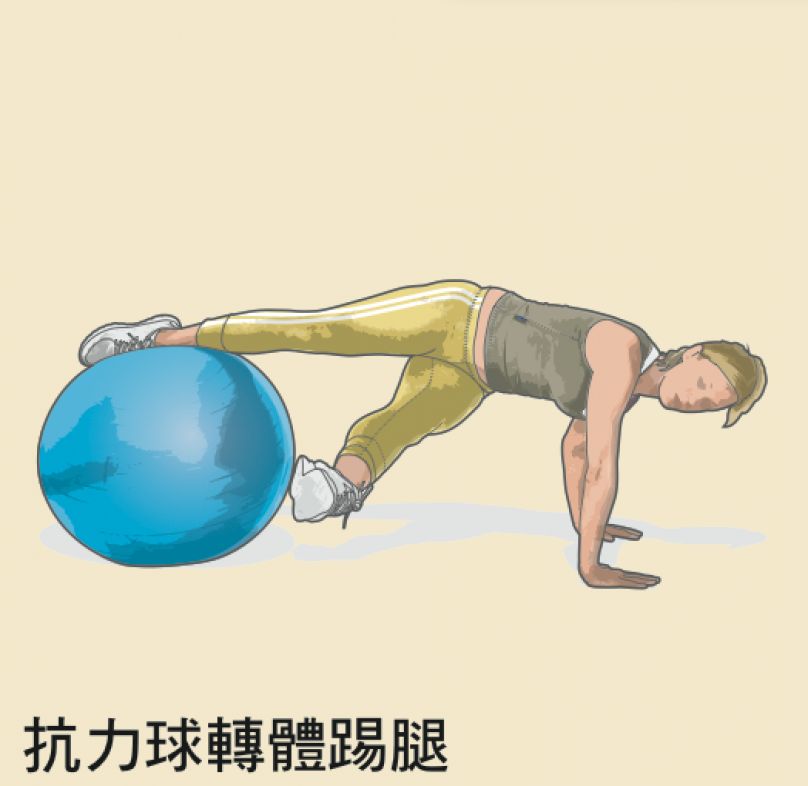The term core muscle group has been widely used in the fields of rehabilitation medicine, sports medicine and physical fitness.

In the hospital, we often hear doctors say to patients with low back pain, “you should strengthen core training and practice flying swallow movements when you go back!” In the gym, we often hear some coaches say to customers, “look how bad your core muscles are!” Then take the students to sit in sit ups or lean back.

Many other friends will practice the flat support according to the online video, thinking that they can strengthen the core sports.

But in fact, many people roast that “core” training is very difficult.
![]()
I have seen a lot of people who often have back pain.
In fact, the effect of core training is based on skills.
The core training focuses on three aspects: core activity, core stability and core strength.
Core range of motion refers to the movement ability of spine and hip joint.
Before the start of exercise, it is very important to activate the muscles of spine and hip joint first, which can relax the too tense muscles, strengthen the weaker muscles, and let the infrequently used muscles play their normal functions.
These are helpful to balance the relationship between muscle length and exercise mode, activate deep muscles and improve core stability and strength.
Yogi Xiaobian recommends reading: when the teacher calls you “tighten the core”, you suck your stomach hard? Core stability is to improve the efficiency of posture and limb movement.
It can control the body position and the ability of middle body (trunk) movement.
The goal of training is mainly to build the foundation of support in the deep muscles of abdomen, hip and spine.
The abdominal muscles in the lower part of the pelvis and the transverse muscles in the front of the pelvis form a common base, and then form a plurality of transverse muscles in the lower part of the pelvis.
Core strength is the ability of the body to perform challenging tasks.
These tasks usually require good posture and control.
All core muscle groups, including deep and surface, will participate, and these muscle groups play a key role in core training.
However, it must be remembered that good core strength must be based on good core stability.
The following three sets of Pilates core training series recommended by yogi Xiaobian will help us learn how to activate and control our deep muscles.
Avoid if you are pregnant.
If you have any injuries, past or recent surgery, check with your GP first.
The first sequence is a mix of dynamic asanas and mat Pilates exercises that help strengthen the core and arm muscles.
1.
Desktop to half Cobra pose.
2.
Dynamic dolphin.
3.
Side forearm plate and forearm plate.
4.
Put your hands alternately on the support of the opposite hip.
▪️ Practice in the order shown.
▪️ Practice 5-10 groups of X3 rounds in each round, and rest for 30 seconds-1 minute between each round.
▪️ In the last two groups, grasp the core and stabilize the pelvis.
The second sequence is particularly focused on the lower abdomen to activate these muscles and build strength in this area.
It is important to focus on the lower abdomen, which plays a key role in stabilizing the pelvis and supporting the lumbar spine.
The abdomen must be close to the yoga mat in the following actions, If you can’t keep close, please lower the lifting height, lie on your back, cross your neck, breathe in, lift your legs, exhale, lower your legs, tighten your upper body, lift your hands on your back, cross your neck, lift your legs to 90 degrees, slowly lower them to 15 degrees, keep breathing, lie on your back, cross your neck, breathe in, lift your legs to 90 degrees, exhale, drive your right hand to lift your right hand close to your left leg, and lower your legs on the same side.
Practice lying on your back, put your hands on your head, put your palms together, and put your palms in a leg bound posture Hold still and exhale.
The legs drive the upper body to lift the hands, touch the feet, inhale and fall back.
Practice this sequence in the order shown.
If you feel it, add one group per round.
10 times in the first round, 12 times in the second round and 15 times in the third round.
The third great little sequence will stimulate your abdominal muscles and exercise your arm muscles.
It also strengthens back muscles, further supports the spine and helps with better posture and body balance.
▪️ When doing flat support exercises, keep the core muscles involved and the tailbone upward to avoid any lumbar extension.
▪️ When doing push ups, put a blanket under your knees if necessary.
▪️ In the final exercise, if you can’t keep your hips away from the mat, when you put your hips down, you can keep your hips slightly away from the mat until your arms get more strength.
▪️ Breathing is very important in sports because it is the fuel for us to move forward.
Exhale hard.
Practice this sequence in the order shown.
Practice 10-15 sets of X3 rounds.
Grasp the core and press the palm firmly on the cushion…

